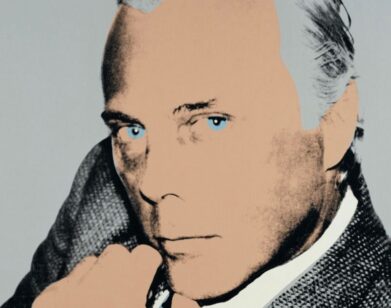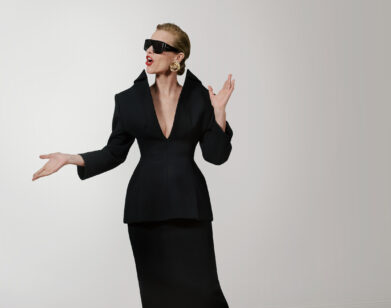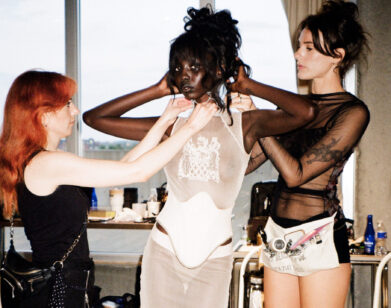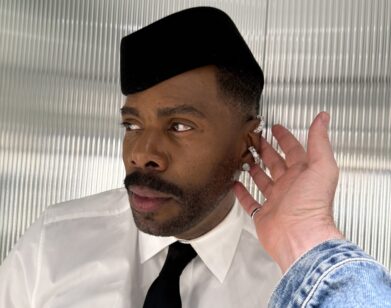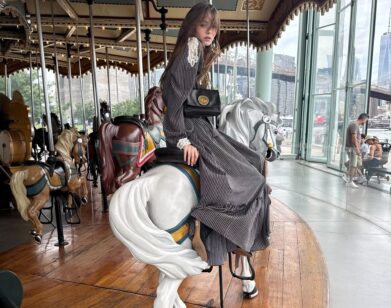Kris Van Assche Is Packing in Paris
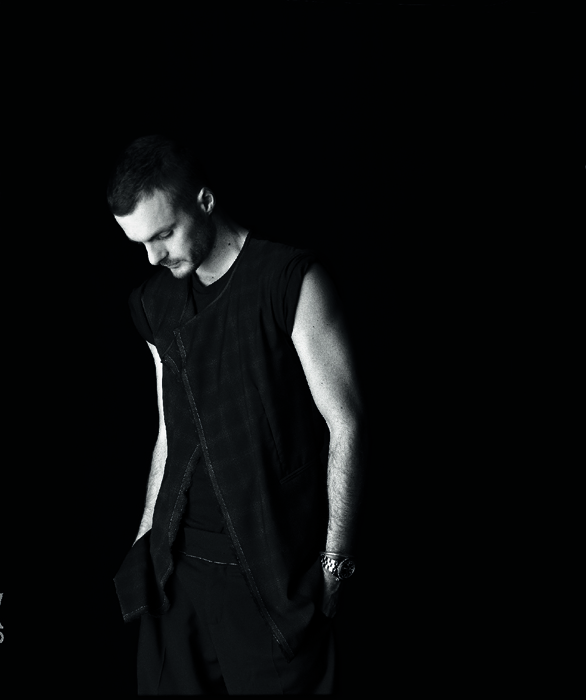
PORTRAIT BY JULIA CHAPEAU
Kris Van Assche has a new weight on his shoulders this coming Men’s Fashion Week in Paris. Not only is he presenting the fall collection of his eponymous line and Dior Homme; he’s also launching a collaboration with EASTPAK. As the successor to the short but substantial reign of Hedi Slimane at Dior Homme, Van Assche faced incessant comparison at his start, and has worked industriously to establish his own universe. Far, far from Slimane’s ’60s dandys, Van Assche’s streetwear-inspired Dior is more classical than his Antwerp colleagues, but cheekier than the old-school French brands, and forgiving of myriad body types. We met up with the designer in Paris as he was putting the final touches to his shows, and talked about masculinity, Belgium and maturity.
ALICE PFEIFFER: What have been your sources of inspiration, for both upcoming shows?
KRIS VAN ASSCHE: I continuously redefine the suit: how can I freshen up a garment that symbolizes maturity? How can I make it less stern and more adapted to daily life? How can I bridge sportswear on one end and tailoring on the other? I have always loved the idea of raw elegance—tailored pieces with a sporty look… or the exact opposite, as you’ll see on my show, such as tailored hoodies. The result is hybrid pieces for an elegant, cool look. Also, for the first time, there is a collection for EASTPAK. These are bags that perfectly reflect this passage into maturity, by mixing the practical, the destructed and the elegant.
PFEIFFER: Do you wear the clothes you designed, or are they imagined for a totally different man?
ASSCHE: Yes, of course, I wear clothes by KRISVANASSCHE and Dior Homme. But I always have an imaginary man in mind when I develop a collection. This man is more daring, and less classical in his choices. This imaginary man grows and evolves with me. He is slightly different at Dior and KRISVANASSCHE, but at the end of the day, he shares the same principles. It is the attitude and the state of mind that change.
PFEIFFER: Where is Antwerp in your work?
VAN ASSCHE: There is no definition of the Antwerp style—this would simplify the Belgian designers, who each have their a universe unto him- or herself. This said, there is a notion of no-nonsense, a will to find the essence of the clothing in its construction and seek for an ultimate simplicity.
PFEIFFER: What is the relation between the KRISVANASSCHE man and the Dior Homme? Two very distinct people, or rather, one man at a different stages of his life?
VAN ASSCHE: KRISVANASSCHE and Dior Homme are, before anything, two states of mind. But the two converse in my mind continuously. For my first collection at Dior Homme, I tried to differentiate the two in an almost mathematical manner. Then later, it occurred to me that these two universes could perfectly cohabitate, and that I could really let [them] when designing for Dior Homme. When I want to make a piece, I no longer think about the split between the two, but about its technical reality: the instruments available at Dior and KRISVANASSCHE are so different that the result becomes radically different too. For the latter, I developed the collections through a very personal need, I was my first client. For the former, I also follow my instinct but have several different types of customers in mind.
PFEIFFER: When you took over Hedi Slimane’s much-followed career at Dior Homme, you were often compared to him. Do people still talk to you about him, and does that bother you?
VAN ASSCHE: Less and less.

